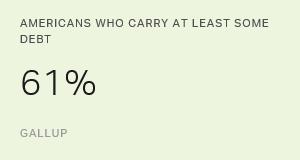Two years ago, New York City Schools Chancellor Joel Klein launched the NYC Leadership Academy, which was specifically intended to build a team of great principals for the city's schools. The idea has generally received acclaim -- and rightly so, given that the principal plays such a pivotal role in the tricky balance between meeting the needs of students and teachers on the one hand, and the requirements of education administrators on the other.
It may give parents of school-age kids pause to think that a generation of baby boomer principals will retire in the next few years, leaving less-experienced successors to guide the future performance of the nation's schools. In Gallup's consulting with school districts of various sizes and geographic areas, we consistently run into four major traps when it comes to traditional principal selection and development programs. If any of these problems sound familiar, the recommendations may be helpful in designing new systems for selecting and developing the next generation of school leaders.
- Unreliable Principal Selection Methods
The methods of selecting principals are unreliable in many districts. Significant weaknesses emerge when interviewers use unstructured interviews. Questions diverge as the result of an applicant's responses, so each applicant is given a slightly different interview, making direct comparisons between candidates impossible. Further, interviewers tend to listen for their own answers to the questions -- and those responses aren't always predictive of success in the principal role.
What's the alternative? School districts should think about ways to better structure the interview process. One of the first steps is to study success by identifying the very best current principals. Talk to them in small groups to discover why the best principals are successful. Convene groups of teachers, students, and parents who know these principals and ask them why they're successful. From these two activities begin to develop a list of qualities successful principals bring to their role, and consider the list during the hiring process.
- Confusion About Knowledge, Skills, and Talents
Knowledge, skills, and talents are frequently confused. Many characteristics that the best principals possess blur the lines among the three constructs. For example, there is often overlap between knowledge about the importance of creating a vision, skills for organizing a process, and talent to unite a group around a vision for the school. However, knowing about the importance of vision is different from possessing the skill to develop a vision statement, and both are different from the inherent qualities necessary to develop a shared vision among group members.
What's the alternative? The best principals must have talents -- thoughts, feelings, or behaviors that are naturally part of the person. One of Gallup's clients aptly describes talents as "intangibles" needed for the position. When school districts interview principal candidates, they are actually looking for talents. If all principals needed were skills and knowledge, they could be selected from their resumes.
This is not to say that knowledge and skills are unimportant to a principal's success, but possessing the right talents is more important. You can teach the knowledge and skills an individual needs to be the best. But selecting a candidate without the right talents leads to the No. 1 mistake of training: trying to train your way out of a poor selection decision.
- Beware the Entitlement Program
When knowledge, skills, and talents are confused, leadership development programs for potential principals become the district's worst enemy because they create entitlement mentalities. The assumption is that if people have the requisite set of knowledge and skills, they have what it takes to be a good principal. Once the leadership participants finish their degree, complete the prescribed learning activities, and gather some experience, they feel entitled to the next position available.
What's the alternative? Selecting individuals to participate in leadership programs should be done as carefully as filling a principal vacancy itself. Individuals who will benefit most from leadership programs are those who have the talent to be good principals, but don't yet possess the requisite knowledge and skills.
- Choosing From Volunteers
Most school districts realize that because of the shortages of qualified candidates, they must recruit teachers, and hard-to-fill positions require specialized recruitment approaches. But few school districts make organized and sustained efforts to recruit principals. Instead, leadership programs are filled with walk-ons -- people who volunteer to become principals, sometimes by investing financially in a master's program. But school districts taking volunteers is a little like a college football team hoping to play in a bowl game with a group of walk-ons.
What's the alternative? Principals and district administrators must become talent scouts, encouraging talented teachers and promising assistant principals to consider leadership programs. However, school districts must be careful not to reinforce an existing "good old boy system." All referrals must be treated equally, and this is where the assessment of talent is critically important.
